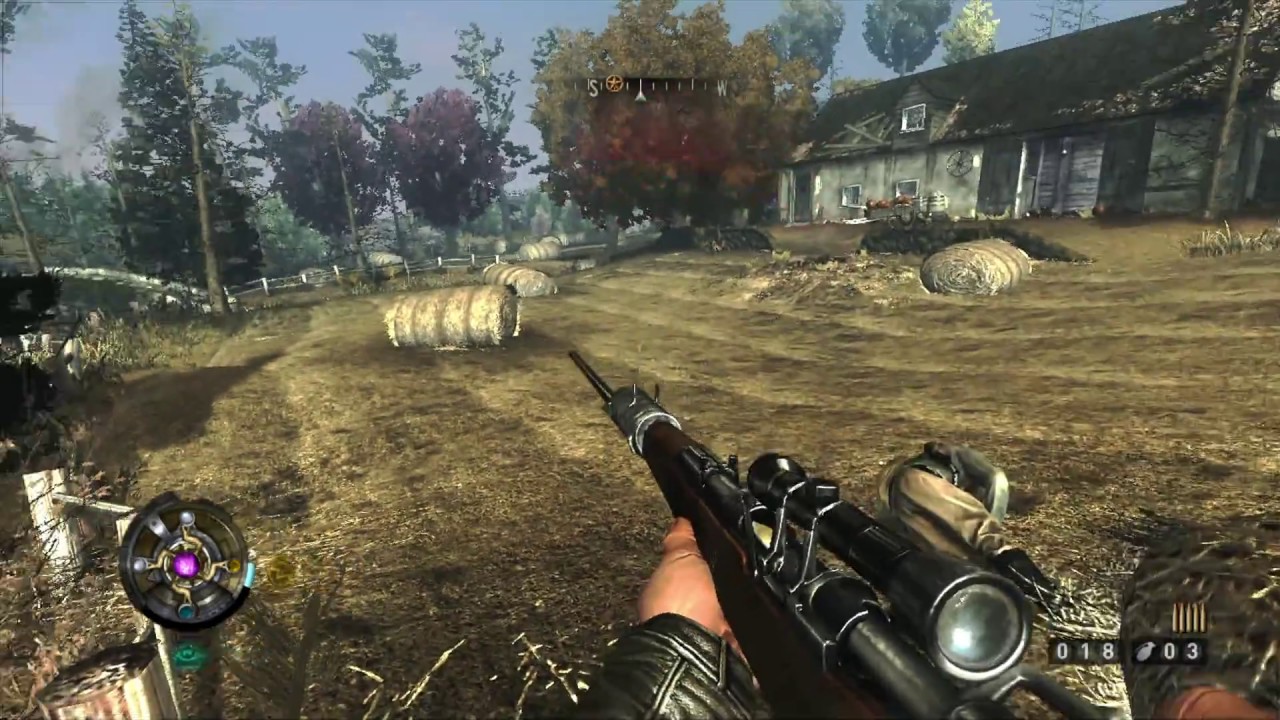
Ask an older gamer about Wolfenstein and you’ll likely get one of two reactions: Castle Wolfenstein, a 2D, stealth-based computer game from the 1980s, or Wolfenstein 3D, an early 1990s first-person shooter that many point to as the catalyst for the popularity of that style of game. I am old enough to have played — and completed — both games. I enjoyed both of them even though they’re very different. One of the things they had in common, however, was that each game takes place during World War II and use Nazis as the enemy. In 2001, the franchise was rebooted by Activision with the release of Return to Castle Wolfenstein. Featuring B.J Blazkowicz, the protagonist from the 1992 shooter, this new game featured a plot heavy on the Nazis’ interest in the paranormal and an updated game engine.
2009’s Wolfenstein is a direct sequel to the 2001 game. Again featuring B.J. Blazkowicz as the main character, this entry also focuses on the Nazis’ involvement in the occult and paranormal. This time, however, through the use of an energy called “the Veil”, the Nazis have found a way to travel to an alternate dimension known as the Black Sun. In an attempt to mine the crystals necessary to harness this energy, the Nazis’ have taken over a German town called Isenstadt. The player, as Blazkowicz, is tasked with not only fighting the Nazis in Isenstadt but also working with two resistance groups who can provide support, weapons, and objectives to be completed.
Using standard first-person gameplay mechanics, the player will navigate the streets of Isenstadt. On the first level, however, you discover the first hint of a power-up called the Thule Medallion. Using the medallion, the player can obtain crystals that enable the use of the Veil energy to perform certain special abilities. Veil Sight, for example, allows B.J. to see pools of energy that can be used to charge the crystals. Mire can be used to slow down time. Veil Shield allows B.J. to protect himself from bullets and attacks. Empower can infuse the players weapons with more energy, enabling them to penetrate Veil shield energy used by the Nazis.
The key to succeeding in Wolfenstein is knowing what Veil crystal energy to use and when. Most of the time, it’s not very hard to figure out when to use Veil Sight to see a hidden ladder or find a hole in a wall that allows you to enter a room that appears otherwise inaccessible or when to use Empower to take out shielded enemies. However, in some levels, some experimentation is required to figure out what energy is best suited to the task at hand.
The game rewards those who like to explore by hiding enemy intel and gold throughout each of the game’s areas. Most items are tucked away in the least likely of locations. The gold has a purpose other than simply giving the player something to do. It can be used to purchase weapon upgrades in the many black market stores run by the resistance groups. All of the game’s weapons can be upgraded. Upgrading the weapons extensively makes playing the game much easier in the harder levels near the conclusion of the game. Gold is also awarded to the player for finding intel and completing levels.
First-person shooters that take place during World War II have become somewhat clichéd. Even the highly acclaimed Call of Duty: World at War required solid gameplay and fantastic multiplayer to overcome resistance to initial reactions of being “yet another World War II shooter.” Unfortunately for Wolfenstein, it possesses no true innovations or features that haven’t been included in the many games that have preceded it and the gameplay is simply average. Competent, but average.
Despite the interesting Veil energy abilities, the Black Sun dimension, and the wide variety of enemy creatures the player encounters in Wolfenstein, the game never delivers an experience that rises above the myriad of first-person shooters available on the Xbox 360. If you can find the game at a discount, it’s certainly worth picking up. However, as a $60 game, Wolfenstein doesn’t make the cut.
6 out of 10.

